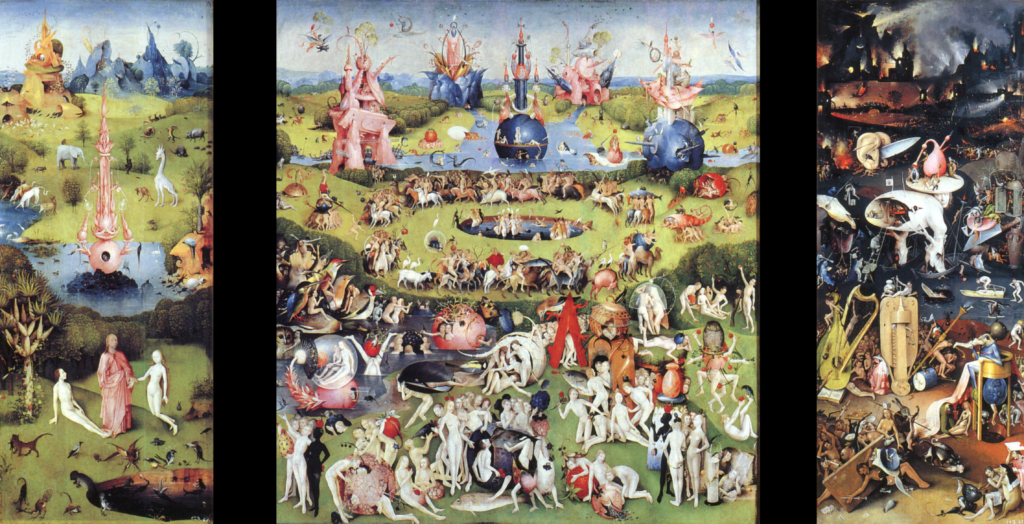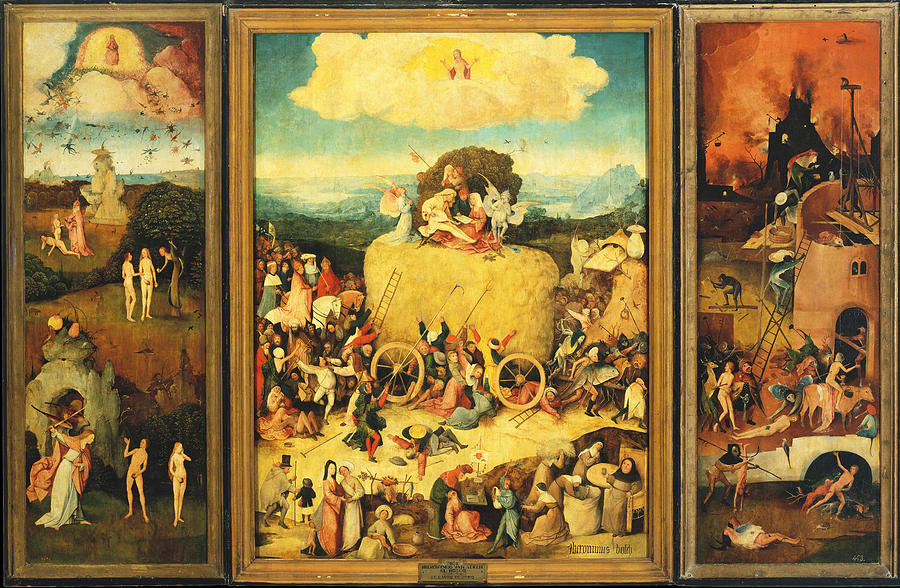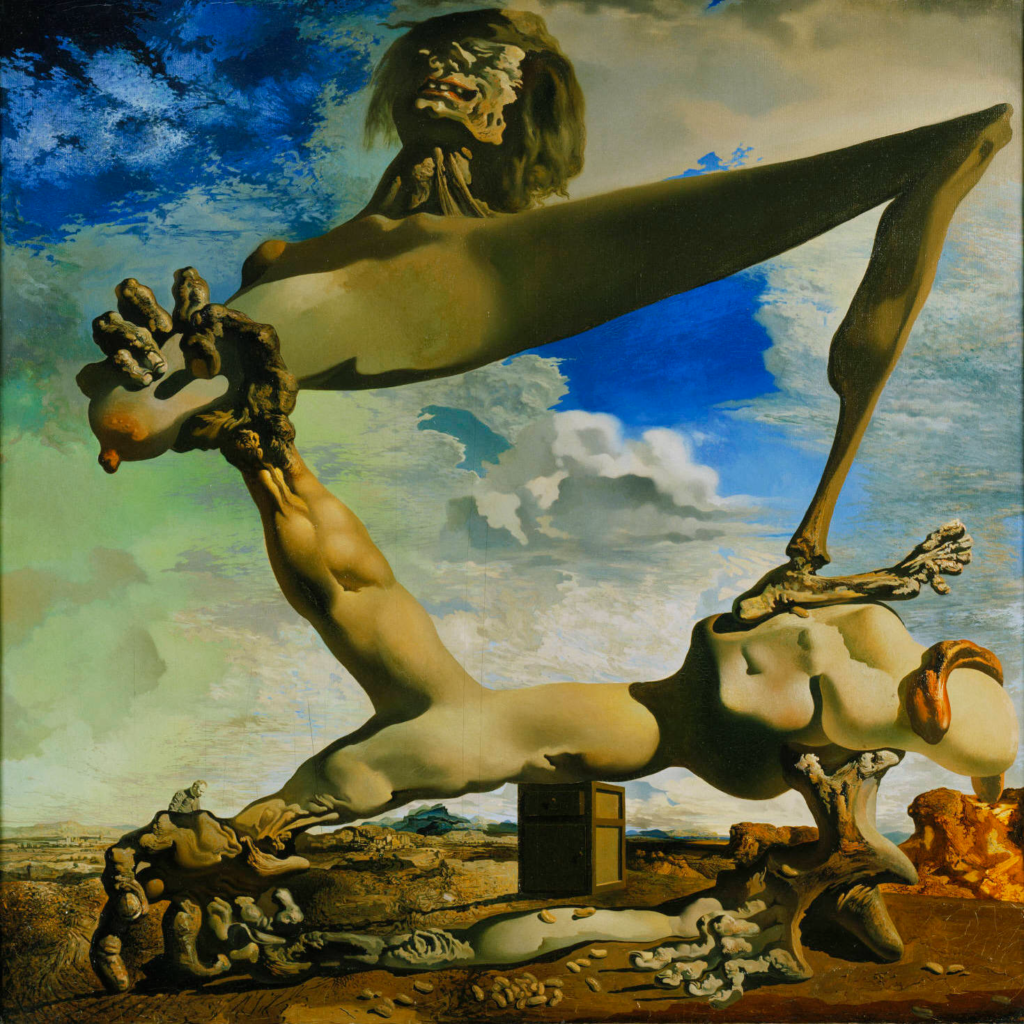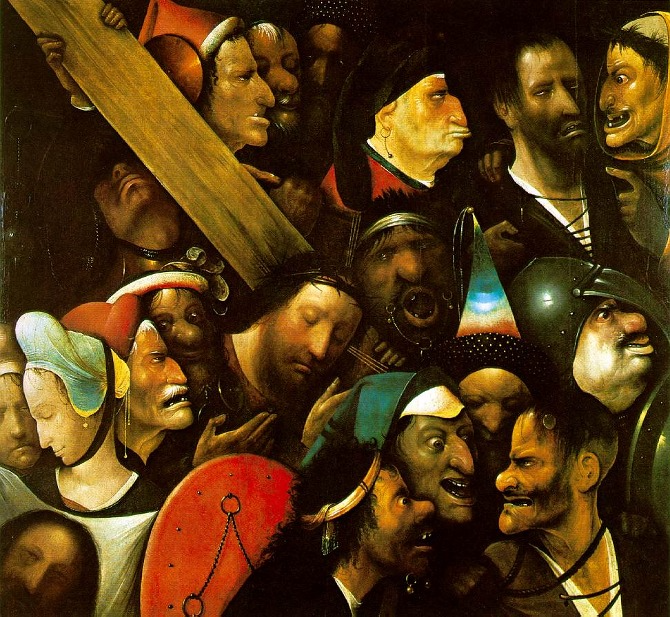Today, I would like to introduce a great time traveler—Bosch. His works seem completely out of place for his era, yet they share similarities with surrealist paintings from five hundred years later.
The Great Time Traveler: Bosch
- Bosch was a great “time traveler,” whose works look nothing like those of his time. He was a great artist who went against the grain. Although Bosch lived at the end of the 15th century, he is considered one of the early inspirations for 20th-century surrealism, which emerged five centuries later.
- Bosch, whose full name was Hieronymus Bosch, lived around the late 15th and early 16th centuries in the Netherlands, during the same period as Leonardo da Vinci. He was born in the deeply religious town of ‘s-Hertogenbosch and was a highly prolific painter. His most famous works, The Garden of Earthly Delights and The Haywain Triptych, clearly show that his artistic style was unlike that of his contemporaries, yet more aligned with the surrealism that emerged five centuries later.
- Bosch’s “coolness” in defying the norms of his time can be attributed to a major historical event: Columbus’s discovery of the New World. At the time, people believed that the New World was the Eden described in the Bible. However, the discovery of Eden was not necessarily a good thing, because the Bible also states that humankind could never return to Eden unless the apocalypse occurred. Bosch saw the revelry and decadence of society, and living in an environment thick with religious fervor, he believed that when people saw Eden, they should always be alert to the imminent arrival of the apocalypse. Therefore, Bosch used completely different techniques in his paintings, often focusing on irony and warnings. Though his work was entirely different from the art style of the Renaissance, it remains an invaluable part of human artistic heritage.
- Bosch’s unconventional approach is most evident in his rejection of realistic techniques. Realism was a key technique used by Renaissance artists, and it was through realism that many masterpieces were created. However, in Bosch’s works, realism is almost nonexistent. The characters he painted are grotesque and terrifying, not because of poor technique, but because he deliberately used his mastery of painting to portray figures in a bizarre, ugly manner, avoiding realism in order to achieve his expressive goals.
- Bosch’s treatment of religious themes also starkly contrasts with that of Renaissance painters. While Renaissance artists created many religious-themed paintings, almost all of them were intended to praise Jesus and the Virgin Mary, inspiring and educating the public in a positive light. Bosch, however, chose a satirical approach. By depicting the ugliness and corruption of humanity, he sought to warn society. In his iconic work The Garden of Earthly Delights, Bosch portrays many terrifying scenes of hell, including various punishments, such as turning musical instruments into cruel instruments of torture. With these images, Bosch reminded people that the pleasures of life could turn into tools of punishment after death.
- Another distinctive feature of Bosch’s painting is his use of the “God’s-eye view.” Renaissance works typically had protagonists, with clear distinctions between main and secondary figures. In Bosch’s “God’s-eye view,” there is no central figure; everyone is a supporting character, and each person’s existence is meant to emphasize the theme. The true protagonist is the viewer—the “you” who is observing the painting, and the perspective from outside the painting is the “God’s-eye view.”
- With the “God’s-eye view,” Bosch draws the viewer directly into the painting, making the warnings contained within the work resonate with those who view it. In The Garden of Earthly Delights, the triptych is divided into three parts, from left to right, depicting humanity’s creation by God, its gradual corruption, and ultimate downfall. There is no specific central figure in the entire narrative, yet it is filled with details, including scenes of people being punished in hell, which make the viewer feel as though they are part of the scene. Bosch’s use of the “God’s-eye view,” with its lack of a central character, marked a significant breakthrough in his artistic expression and had a profound influence on future art.

Bosch – The Garden of Earthly Delights
From left to right, this triptych tells the story of humanity’s creation by God, its gradual corruption, and eventual complete downfall.

Bosch – The Haywain Triptych

Dalí – The Great War’s Foreboding
This is a representative work of 20th-century modernism, and Bosch’s paintings from five hundred years earlier share many similarities with it.

In Bosch’s works, the grotesque figures clearly show that his primary focus was not realism but rather the emphasis on themes of warning and satire.

Caravaggio – Judith Beheading Holofernes
This work, created nearly a hundred years after Bosch, clearly shows the profound influence Bosch had on later Baroque artists.
Quick Tip
What’s the connection between Indians and Native Americans?
Indians in Asia are called “Indian,” and Native Americans in the U.S. are also called “Indian.” Although they are different races and look nothing alike, why do they share the same name?
At the time, Columbus’s theory for his voyage was based on the belief that the Earth was round, so he would inevitably reach India and China. When he discovered the Americas, he still believed until his death that the place he had found was India and China, not the Americas. Therefore, under Columbus’s naming, Native Americans ended up with the same name as the people from India.


